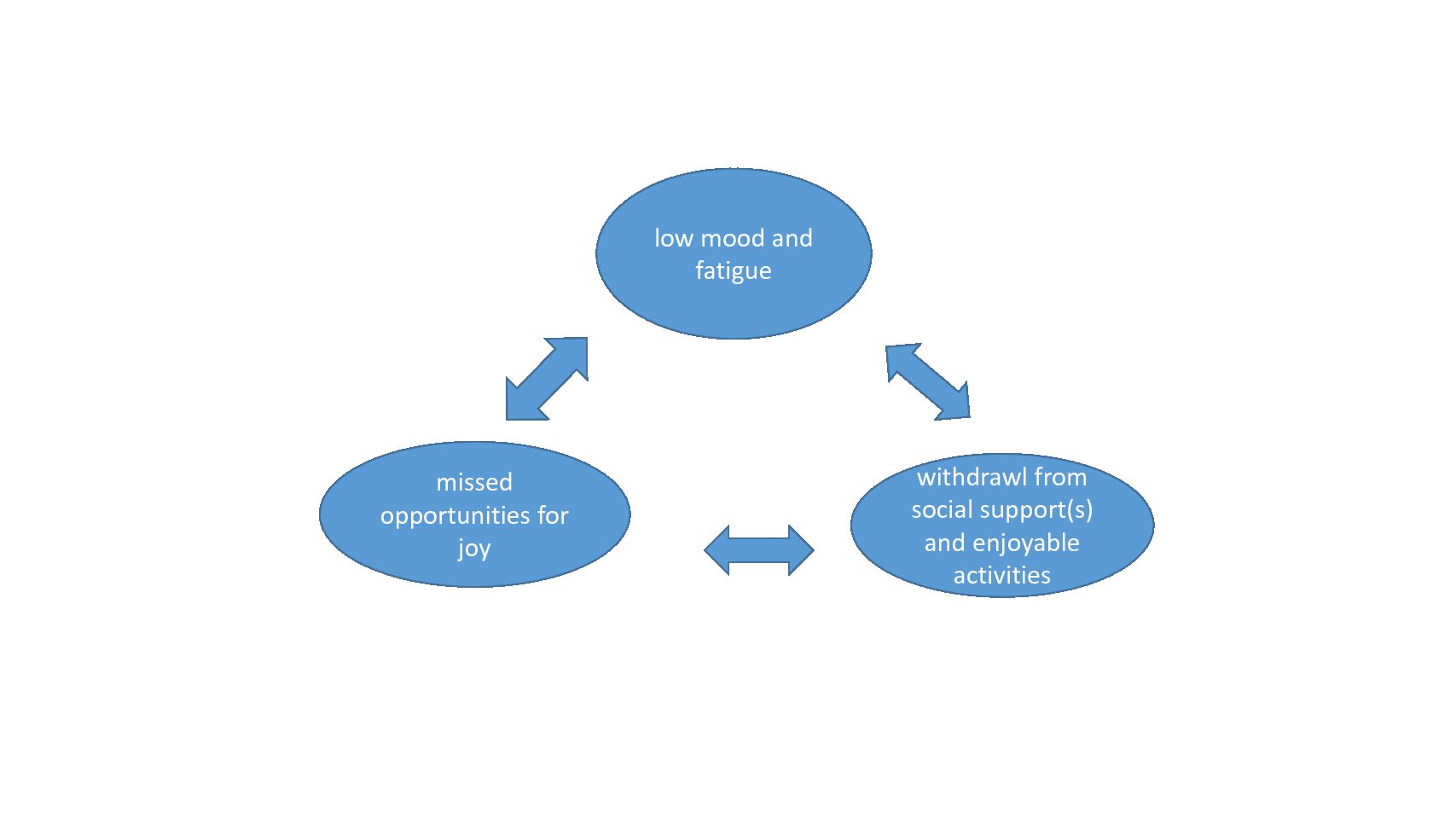
Challenging Negative Thoughts
This could also be the time where you reach out to your supervisor or a colleague for support. In the role of any supervisor, it is part of their job description to ensure their employees complete what is needed. It is your job as an employee to a) complete the tasks and/or b) ask for help and inform a supervisor when there are barriers in completing the work. If you’re feeling guilty about asking for help, try to remember that it is not always your job to complete everything else around you. In fact, your job is to do your best and take care of yourself so you can continue to work in the future.
The guilt that can come from asking for help often stems from a myth that we tell ourselves: “we have to do everything” or “they will know I’m a failure if I ask for help” or something else that is based in fear, rather than reality. Identifying those negative thoughts can be helpful in challenging them in order to best succeed. When you notice yourself having these thoughts, practice asking for evidence to support or dispute each thought. After all, a thought is just a thought- it’s not a fact. Identify some thoughts or myths you tell yourself. Now, come up with a counterstatement that is more truthful. If you’re having difficulty with this, imagine what you would tell a close friend if they said these statements to you.
Schedule Positive Activities
When you are feeling overwhelmed and exhausted, you probably don’t feel like doing anything. Scrolling on your phone can feel like the easiest way to pass the time after a long day. However, it may be the most beneficial time for you to try a new activity and allow for some creative expression.
There is some research behind making ourselves do something when we don’t feel like it in order to improve one’s mood. It’s called Behavioral Activation. The idea is that we can fall into a negative loop by withdrawing from social support or enjoyable activities when we feel stressed or sad. This gives an immediate relief which reinforces this isolating behavior. In the longer term, withdrawing deprives us of potentially pleasurable events from spending time with social support or an enjoyable activity, which then worsens our mood.
The graphic below represents this cycle where we can feel stuck.

How to counteract this? Identify and schedule these pleasurable activities. Then actually go when the time comes. Try to fight that urge to cancel and focus on the long- term effects. Even if you are tired and don’t feel like going, it sometimes feels better once you are actually doing the thing you said you would do. Even if it was not very fun or enjoyable, you at least get the sense of accomplishment of doing it. This in itself can enhance mood.
When deciding what kinds of activities to add to your schedule, they can be pleasurable or productive things. To give a few examples:
- call an old friend
- color in a coloring book
- go for a walk
- read a book
- go window shopping
- clean your room
- visit neighbors
- ride a bike
- cook a meal
- go to a park
- research a topic you find interesting
- do one load of laundry
- dance to loud music
- visit a pet store or animal shelter
- donate clothes
- visit a greenhouse….
Taking care of Physical Body
We need to make sure that we are biologically setting ourselves up for success. This means eating and sleeping with a regular schedule. Stress can impact appetite by either increasing or decreasing how hungry we feel. Just because you may not feel hungry, does not mean your body does not still need food. Start with making sure you are eating at least a snack every 3-4 hours. If you notice a decreased appetite, opt for drinking water or juice throughout the day. Sometimes, drinking can feel easier than eating solid foods, so juice and smoothies can be a good option to ensure you are obtaining nutritional value
Sleep is crucial in managing stress and reducing our vulnerabilities to negative emotions. Oftentimes, sleep is the first to go when we are under a great deal of stress. We feel worse because we are not sleeping, which increases anxiety, then we can’t fall asleep as we are worried about how little sleep we get. AH! This can be a horrible cycle to experience. One helpful way to break up this cycle is to set aside a “worry time” before you go to bed. Instead of crawling into bed and starting to plan your next day or recounting the day you just had and getting yourself worked up, intentionally set aside this time earlier in the day. Allowing yourself to think ahead and explore your concerns BEFORE you get into your nice, cozy bed, can help create that relaxing environment so your bed feels like a place you can sleep (instead of worry).
Practice Relaxation Techniques:
On top of all of these other strategies to manage stress, here a few tips you can try when you are either: in the moment of feeling overwhelmed or trying to relax before falling asleep.
- Paced Breathing: While sitting or lying down, place one hand on the stomach and one on the chest. Inhale through the nose for 4 seconds, hold for a moment, and exhale slowly through the mouth for 6 seconds. Repeat until calm.
- Progressive Muscle Relaxation: While sitting or lying down, take a few deep breaths to begin. Move through each section of the body and tense the muscles for a few seconds, not enough to where it hurts, but enough to feel tension. Then relax and take notice of the difference in sensation between muscle tension and relaxation. Begin by curling the toes into your foot and hold the tension for 5 seconds. Let them relax and notice the difference in the feeling. Move up to your calves and thighs and squeeze your legs together for 5 seconds, then relax. Move up and repeat through the hips, glutes, stomach, hands, arms, shoulders, and facial muscles. YouTube has many guided videos that can walk you through it.
- Guided Imagery: Identify a place, real or imaginary, that represents calmness. It could be at the beach, in a meadow, on a mountain, at home, in a spa, or wherever you feel at peace. Using the five senses, describe the place to yourself in as much detail as possible. Imagine the sun sitting in the sky and illuminating the leaves around you. You feel a gentle breeze as the sun hits your skin. You hear a seagull calling in the background. You watch the waves rise up and down as you listen to the water graze on top of the sand. The smell of the ocean and salt is clear. You reach for a cold drink and imagine tasting it, and feeling the coolness against your lips. Before you know it, your body feels relaxed in this environment you created.
If after trying these strategies and you are still finding yourself overwhelmed, having difficulty sleeping, trouble concentrating, and full of self-doubt, it may be time to reach out to a therapist. All of our therapists at Mindful Mind and Body are experts on helping individuals find their strengths and collaborate to come up with a plan to improve their life and overall well being. Please reach out to us by phone or our website intake to schedule a free 15 minute consultation with a therapist to see if counseling is right for you.

Written by Victoria Snow
LCSWA
My specialty area of Dialectical Behavior Therapy training and Mindfulness will help you (or your loved one) cope with the emotional or personal challenges causing difficulty. I have experience working with an array of mental health concerns, including life adjustment issues, severe mental health disorders, stress management and the unique needs of adolescents and young adults. Together we will identify your goals, strengths and weaknesses, in order to determine the best plan for achieving a healthier, happier you. I am out of network from insurance, however able to offer sliding scale rates; as well as out of network billing services to best accommodate your needs.
